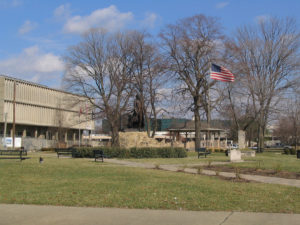Jeffersonville, Indiana is located in an industrial area. It is also an agricultural one because grains, strawberries, and tobacco can be found there. In addition, it is a lighter port for river transportation and has shipyards.
Dying or dead trees still provide shade and shelter to wildlife, therefore total removal should be reserved for structurally unsound trees. This is because they are most likely to fall and cause damages to properties or injury.
Species should also be considered. A tree may be liable to breakage, diseases, pests, drips of messy debris, or one that generates roots that break up your lot and sidewalks. These are cases that help decide if a tree should be removed or not.
Research Legalities
Jeffersonville is a legal and professional company, therefore we tend to check on the legalities of felling trees before settling on removing a tree from your property.
Therefore, it is advised to hire us because we’ll research for you in case you need a permit or written permission to fell a tree.
Larger Trees
To manually cut a large tree, three cuts are made. First, cut roughly one-quarter of the way all through the trunk in the direction you want the tree to fall towards. Second, make the next cut be around two inches above the first cut made, and angle it forms a wedge downward 45°. For the third one, let the cut go on the contrary side of the wedge and somewhere around two inches above the bottom of the wedge. Lastly, cut until about 10% of the tree’s diameter is remaining between the third cut and the wedge.
Another option is that of using the Crane. Making use of an arborist’s crane to remove a tree makes it safer, faster, less damaging, and dangerous to the surrounding and people around. This also saves time, labor is less expensive than the conventional methods of removing trees. We are also available and very much equipped for this if that is what you prefer.
For this procedure, a level space of 200 to 430 Square feet is needed to house the crane. This space should also be within 90 feet of the tree for larger trees. The crane lifts the arborist to the top of the tree where goodwill is tied, then he moves down and cuts the top part. Then the crane operator moves out of the way, to the ground. This process is repeated by the crew until the whole tree is removed.
Managing Debris
The moment the whole tree is down, we can turn the debris into something useful. While thicker parts of the wood can be cut into logs for firewood or any woodwork project, branches and thinner parts can be turned into mulch. We can also help dispose of them to an organic waste dump if you do not need them. The decision is all yours to make, and we’ll do our best to fulfill your request to the best of our capacity.
